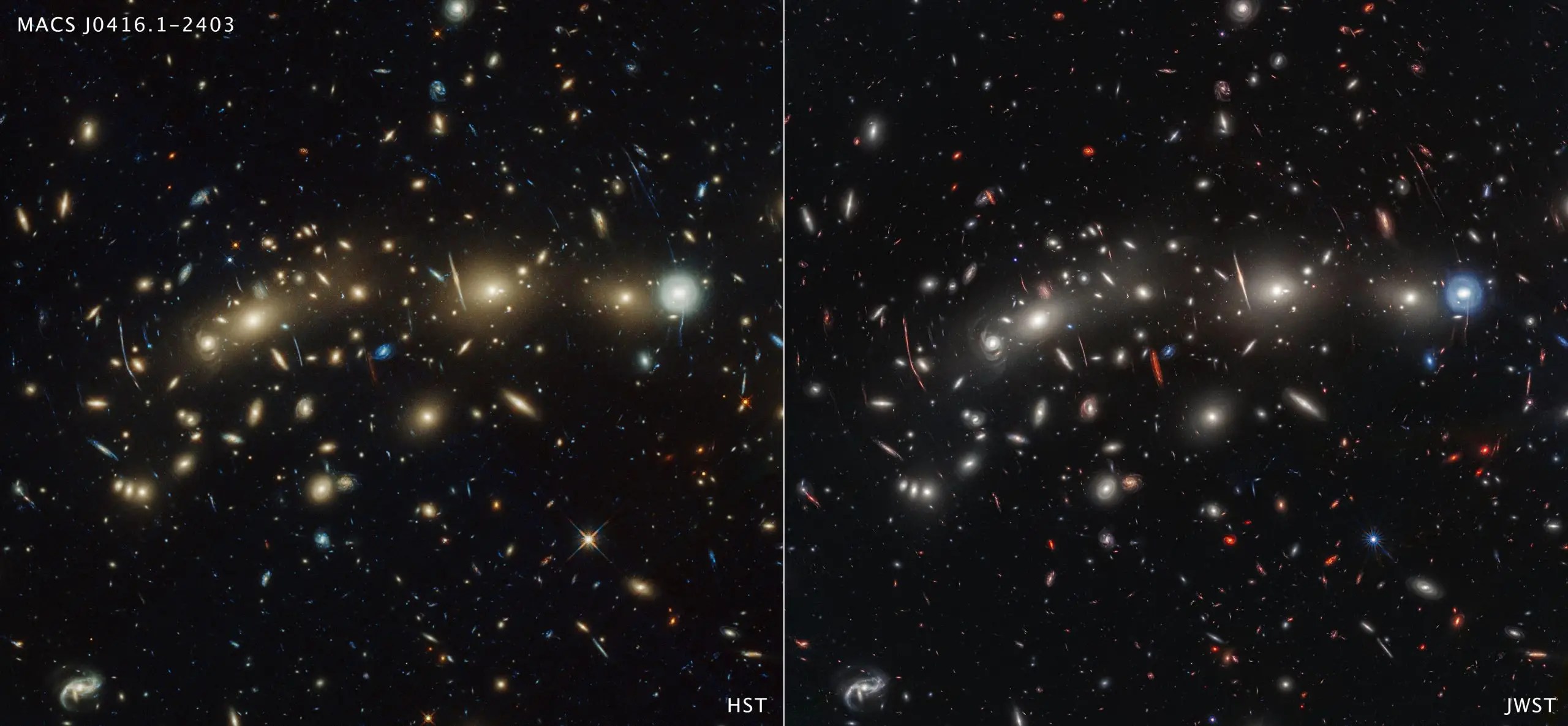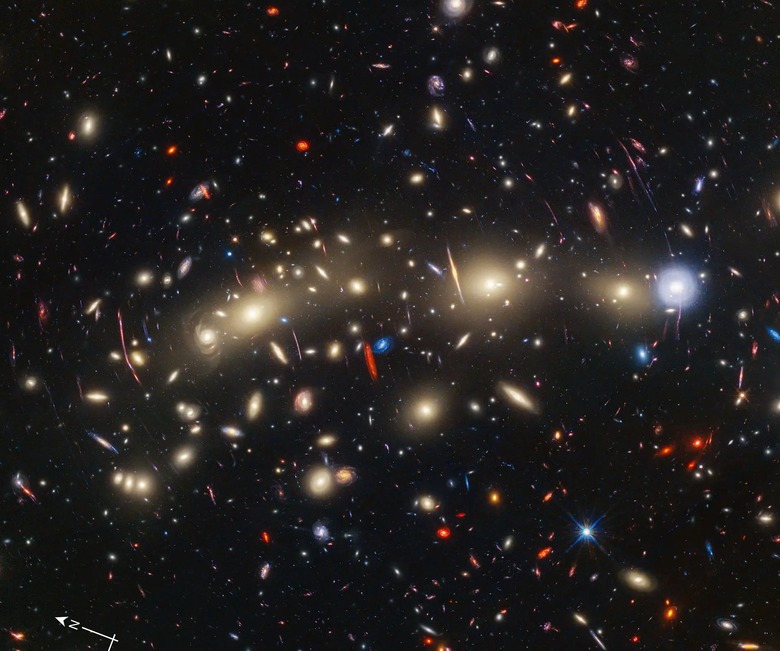Webb And Hubble Team Up To Capture Galactic Collision In Breathtaking Detail
NASA's James Webb Space Telescope and the now-aging Hubble telescope have joined forces to capture observations of a beautiful galactic collision. The new images captured by the observatories help astronomers see even deeper into the universe, getting a deep look at details that are only possible by combining the power of these two flagship observatories.
The two telescopes – old and new – came together to capture images of the galaxy cluster MACS0416, which is located 4.3 billion light-years from Earth. MACS0416 showcases two colliding galaxy clusters that astronomers say will eventually combine into an even larger cluster.
Hubble captured images of the galactic collision as part of its Frontier Fields mission in 2014, which sought super-deep views of the universe. While Hubble pioneered the search, Webb's infrared view has allowed astronomers to peer even deeper into Hubble's previous targeted observations, providing new details.

While Webb's observations of MACS0416 do provide more detail on their own, they were actually part of four epochs of observations in an effort to find objects varying in observed brightness. These transients, they hoped, would help them learn more about the multiple-star systems that exist within our universe.
When brought together, the observations created a spectacular image that almost makes the cluster look like a Christmas tree, earning it the name of the Christmas Tree Galaxy Cluster. Astronomers say they have discovered transients everywhere within the galactic collision thanks to Hubble and James Webb's combined powers.
Despite Hubble's age, the space telescope has captured some of the most iconic observations of our universe. When combined with the power of the James Webb, we're able to look even deeper into the universe, revealing details that we hadn't even dreamed of finding before. Together, Webb and its predecessor are an unstoppable force that could help us uncover the mysteries of the cosmos.
